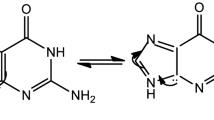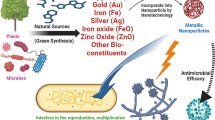Abstract
The synthesis, EPR characterisation and biological evaluation of two new metallodendrimers, i.e. a poly(propyleneamine) dendrimer functionalized at the external surface with 4-bromo-1,8-naphthalimide and conjugated with Cu(II) and Zn(II), was performed with the aim to evaluate their antimicrobial and anticancer activity. The antimicrobial activity was investigated in meat-peptone broth against bacteria B. subtilis and P. aeruginosa, and the yeast C. lipolytica. The results showed that the compounds inhibited effectively the tested pathogens even after their deposition on a textile fabric. Anticancer activity was investigated against three human permanent cell lines from non-small cell lung cancer (A549), triple negative breast cancer (MDA-MB-231) and carcinoma of the uterine cervix (HeLa) in the c = 0.01–30 μM concentration range. The results suggest that these compounds are promising for application in biomedicine as anticancer drugs in the design of new effective preparations. The antimicrobial and anticancer activity may be related to the peculiar structural and dynamical properties revealed for the Cu(II) complexes, by a computer aided analysis of the electron paramagnetic resonance (EPR) spectra. This analysis indicated the formation, at the lowest Cu(II) concentrations, of a flexible rhombic Cu-N4 coordination with the internal amino groups of the dendrimer, which transformed into a Cu2-N4 coordination already at 0.25 equiv. of Cu(II).









Similar content being viewed by others
References
Minoz-Bonila A, Fernandez-Garcia M (2012) Polymeric materials with antimicrobial activity. Prog Polym Sci 37:281–339
Panchenko PA, Fedorova OA, Fedorov YV (2014) Fluorescent and colorimetric chemosensors for cations based on1,8-naphthalimide derivatives: design principles and optical signalling mechanisms. Russ Chem Rev 83:155–182
Gong HH, Addla D, Lv JS, Zhou CH (2016) Heterocyclic naphthalimides as new skeleton structure of compounds with increasingly expanding relational medicinal applications. Curr Top Med Chem 16:3303–3364
Ingrassia L, Lefranc F, Kiss R, Mijatovic T (2009) Naphthalimides and azonafides as promising anti-cancer agents. Curr Med Chem 16:1192–1213
Newkome GR, Shreiner CD (2008) Poly(amidoamine), polypropylenimine, and related dendrimers and dendrons possessing different 1 → 2 branching motifs: an overview of the divergent procedures. Polymer 49:1–173
Astruc D, Boisselier E, Ornelas C (2010) Dendrimers designed for functions: from physical, photophysical, and supramolecular properties to applications in sensing, catalysis, molecular electronics, photonics, and nanomedicine. Chem Rev 110:1857–1959
Scholl M, Kadlecova Z, Klok H-A (2009) Dendritic and hyperbranched polyamides. Prog Polym Sci 34:24–61
Yang H, Kao WJ (2006) Dendrimers for pharmaceutical and biomedical applications. Biomater Sci Polym Ed 17:3–19
Mintzer MA, Grinstaff MW (2011) Biomedical applications of dendrimers: a tutorial. Chem Soc Rev 40:173–190
Rolland O, Turrin CO, Caminade AM, Majoral JP (2009) Dendrimers and nanomedicine: multivalency inaction. New J Chem 33:1809–1824
Grabchev I, Staneva D, Betcheva R (2012) Dendrimers as sensors for biologically important metal cations. Curr Med Chem 29:4976–4983
Sorsak E, Volmajer Valh J, Kornet Urek S, Lobnik A (2015) Application of PAMAM dendrimers in optical sensing. Analyst 140:976–989
Castonguay A, Ladd E, van de Ven TGM, Kakkar A (2012) Dendrimers as bactericides. New J Chem 36:199–204
Tekade PK, Kumar PV, Jain NK (2009) Dendrimers in oncology. An expanding horizon. Chem Rev 109:49–87
Cheng Y, Zhao L, Li Y, Xu T (2011) Design of biocompatible dendrimers for cancer diagnosis and therapy: current status and future perspectives. Chem Soc Rev 40:2673–2703
Caminade AM, Turrin CO (2014) Dendrimers for drug delivery. J Mater Chem B 2:4055–4066
Svenson S (2009) Dendrimers as versatile platform in drug delivery applications. Eur J Pharm Biopharm 71:445–462
Tang YH, Huang AYT, Chena PY, Chen HT, Kao CL (2011) Metallodendrimers and dendrimer nanocomposites. Curr Pharm Des 17:2308–2330
Govender P, Therrien B, Smith GS (2012) Bio-Metallodendrimers – emerging strategies in metal-based drug design. Eur J Inorg Chem 17:2853–2862
Grabchev I, Qian X, Bojinov V, Xiao Y, Zhang W (2002) Synthesis and photophysical properties of 1,8-naphthalimide-labelled PAMAM as PET sensors of protons and of transition metal ions. Polymer 43:5731–5736
Grabchev I, Bojinov V, Chovelon JM (2003) Synthesis, photophysical and photochemical properties of fluorescent poly(amidoamine) dendrimers. Polymer 44:4421–4428
Yordanova S, Grabchev I, Stoyanov S, Milusheva V, Petkov I (2014) Synthesis and functional characteristics of two new yellow-green fluorescent PAMAM dendrimers periphery modified with 1,8-naphthalimides. Inorg Chim Acta 409:89–95
Grabchev I, Dumas S, Chovelon JM, Nedelcheva A (2008) First generation poly(propyleneimine) dendrimers functionalised with 1,8-naphthalimide units as fluorescence sensors for metal cations and protons. Tetrahedron 64:2113–2119
Grabchev I, Bosch P, McKenna M, Nedelcheva A (2007) Synthesis and spectral properties of new green fluorescent poly(propyleneimine) dendrimers modified with 1,8-naphthalimide as sensors for metal cations. Polymer 48:6755–6762
Temiz HT, Boyaci IH, Grabchev I, Tamer U (2013) Surface enhanced Raman spectroscopy as a new spectral technique for quantitative detection of metal ions. Spectrochim Acta A Mol Biomol Spectrosc 116:339–347
Yordanova S, Grabchev I, Stoyanov S, Petkov I (2014) New detectors for metal cations and protons based on PAMAM dendrimers modified with 1,8-naphthalimide units. J Photochem Photobiol A Chem 283:1–7
Staneva D, Vasileva-Tonkova E, Makki MSI, Sobahi TR, Abdеl-Rahman RM, Boyaci IH, Asiri AM, Grabchev I (2015) Synthesis and spectral characterization of a new PPA dendrimer modified with 4-bromo-1,8-naphthalimide and in vitro antimicrobial activity of its Cu(II) and Zn(II) metal complexes. Tetrahedron 71:1080–1087
Grabchev I, Yordanova S, Vasileva-Tonkova E, Bosch P, Stoyanov S (2015) Poly(propylenamine) dendrimers modified with 4-amino-1,8- naphthalimide: synthesis, characterization and in vitro microbiological tests of their Cu(II) and Zn(II) complexes. Inorg Chim Acta 438:179–188
Budil DE, Lee S, Saxena S, Freed JH (1996) Nonlinear-least-squares analysis of slow-motion EPR spectra in one and two dimensions using a modified Levenberg-Marquardt algorithm. J Magn Reson Ser A 120:155–189
Mosmann T (1983) Rapid colorimetric assay for cellular growth and survival: application to proliferation and cytotoxicity assays. J Immunol Methods 65:55–63
Ottaviani MF, El Brahmi N, Cangiotti M, Coppola C, Buccella F, Cresteil T, Mignani S, Caminade AM, Costes JP, Majoral JP (2014) Comparative EPR studies of Cu(II)-conjugated phosphorous-dendrimers in the absence and presence of normal and cancer cells. RSC Adv 4:36573–36583
Ottaviani MF, Cangiotti M, Fattori A, Coppola C, Posocco P, Laurini E, Liu X, Liu C, Fermeglia M, Peng L, Pricl S (2014) Copper(II) binding to flexible triethanolamine-core PAMAM dendrimers: a combined experimental/in silico approach. Phys Chem Chem Phys 16:685–694
Ottaviani MF, Cangiotti M, Fattori A, Coppola C, Lucchi S, Ficker M, Petersen JF, Christensen JB (2013) Copper(II) complexes with 4-carbomethoxypyrrolidone functionalized PAMAM-dendrimers: an EPR study. J Phys Chem B 117:14163–14172
Galán M, Sánchez-Rodríguez J, Cangiotti M, García-Gallego S, Jiménez JL, Gómez R, Ottaviani MF, Muñoz-Fernández MÁ, de la Mata FJ (2012) Antiviral properties against HIV of water soluble copper carbosilane dendrimers and their EPR characterization. Curr Med Chem 19:4984–4994
M. Tülü, A.S. Ertürk, Dendrimers as antibacterial agents. (2012) In: A search for antibacterial agents, Ed. V. Bobbarala (Rijeka: InTech), Chapter 6: 89–106
Yang H, Kao WJ (2006) Dendrimers for pharmaceutical and biomedical applications. J Biomater Sci Polym 17:3–19
Refat M, Ibrahim MED, Grabchev I, Zeinab MA, Samir G (2009) Spectroscopic characterizations and biological studies on newly synthesized Cu2+ and Zn2+ complexes of first and second generation dendrimers. Spec Acta A–Mol Biomol Spec 72:772–782
Ahamad T, Mapolie SF, Alshehri SM (2012) Synthesis and characterization of polyamide metallodendrimers and their anti-bacterial and anti-tumor activities. Med Chem Res 21:2023–2031
Zhang YY, Zhou CH (2011) Synthesis and activities of naphthalimide azoles as a new type of antibacterial and antifungal agents. Bioorg Med Chem Lett 21:4349–4352
Zhang L, Damu GLV, Lv JS, Geng RX, Zhou CH (2012) 1H- 1,2,4-Triazol-4-ium (3,4-dichlorophenyl)methanesulfonate. Acta Arystallogr E Struct Rep Online 68:O131
Damu GLV, Wang QP, Zhang HZ, Zhang YY, Lv JS, Zhou CH (2013) A series of naphthalimide azoles: design, synthesis and bioactive evaluation as potential antimicrobial agents. Sci China Chem 56:952–969
Luo YL, Kishore B, Kumar KV, Zhou CH, Cai GX (2015) Novel benzimidazole derived naphthalimide triazoles: synthesis, antimicrobial activity and interactions with calf thymus DNA. Sci China Chem 58:483–494
Lv JS, Peng XM, Kishore B, Zhou CH (2014) 1,2,3-Triazolederived naphthalimides as a novel type of potential antimicrobial agents: synthesis, antimicrobial activity, interaction with calf thymus DNA and human serum albumin. Bioorg Med Chem Lett 24:308–313
Chen CZ, Cooper SL (2002) Interactions between dendrimers biocides and bacterial membranes. Biomaterials 23:3359–3368
Mecke A, Uppuluri S, Sassanella TM, Lee DK, Ramamoorthy A, Baker Jr JR, Orr BG, Banaszak Holl MM (2004) Direct observation of lipid bilayer disruption by poly(amidoamine) dendrimers. Chem Phys Lipids 132:3–14
Tweedy BG (1964) Plant extracts with metal ions as potential antimicrobial agents. Phytopathology 55:910–914
Denyer SP, Maillard J-Y (2002) Cellular impermeability and uptake of biocides and antibiotics in gram-negative bacteria. J Appl Microbiol 92:35S–45S
Xue Y, Xiao H, Zhang Y (2015) Antimicrobial polymeric materials with quaternary ammonium and phosphonium salts. Int J Mol Sci 16:3626–3655
An YH, Friedman RJ (1998) Concise review of mechanisms of bacterial adhesion to biomaterial surfaces. J Biomed Mater Res 43:338–348
Andreozzi E, Barbieri F, Ottaviani MF, Giorgi L, Bruscolini F, Manti A, Battistelli M, Sabatini L L, Pianetti A (2016) Dendrimers and polyamino-phenolic ligands: activity of new molecules against legionella pneumophila biofilms. Front Microbiol 7:289
Zhao X, Loo SCJ, Lee PP-F, Tan TTY, Chu CK (2010) Synthesis and cytotoxic activities of chloropyridylimineplatinum (II) and chloropyridyliminecopper(II) surface-functionalized poly(amidoamine) dendrimers. J Inorg Biochem 104:105–110
Acknowledgements
The authors acknowledge Grants № DFNI H09/03-2016 and № DFNI Б 02/30 of the National Science Fund, Ministry of Education and Science of Bulgaria.
Author information
Authors and Affiliations
Corresponding authors
Rights and permissions
About this article
Cite this article
Grabchev, I., Staneva, D., Vasileva-Tonkova, E. et al. Аntimicrobial and anticancer activity of new poly(propyleneamine) metallodendrimers. J Polym Res 24, 210 (2017). https://doi.org/10.1007/s10965-017-1387-0
Received:
Accepted:
Published:
DOI: https://doi.org/10.1007/s10965-017-1387-0




